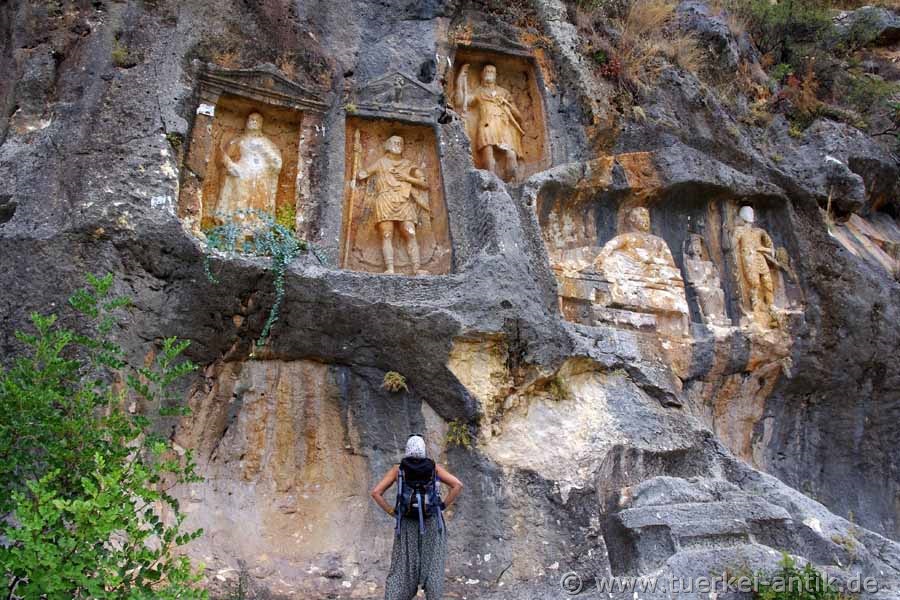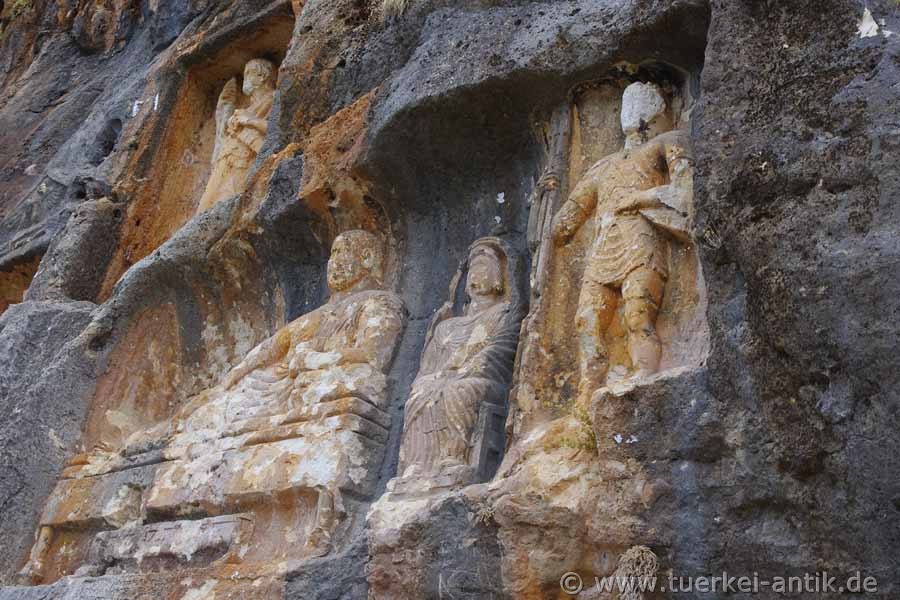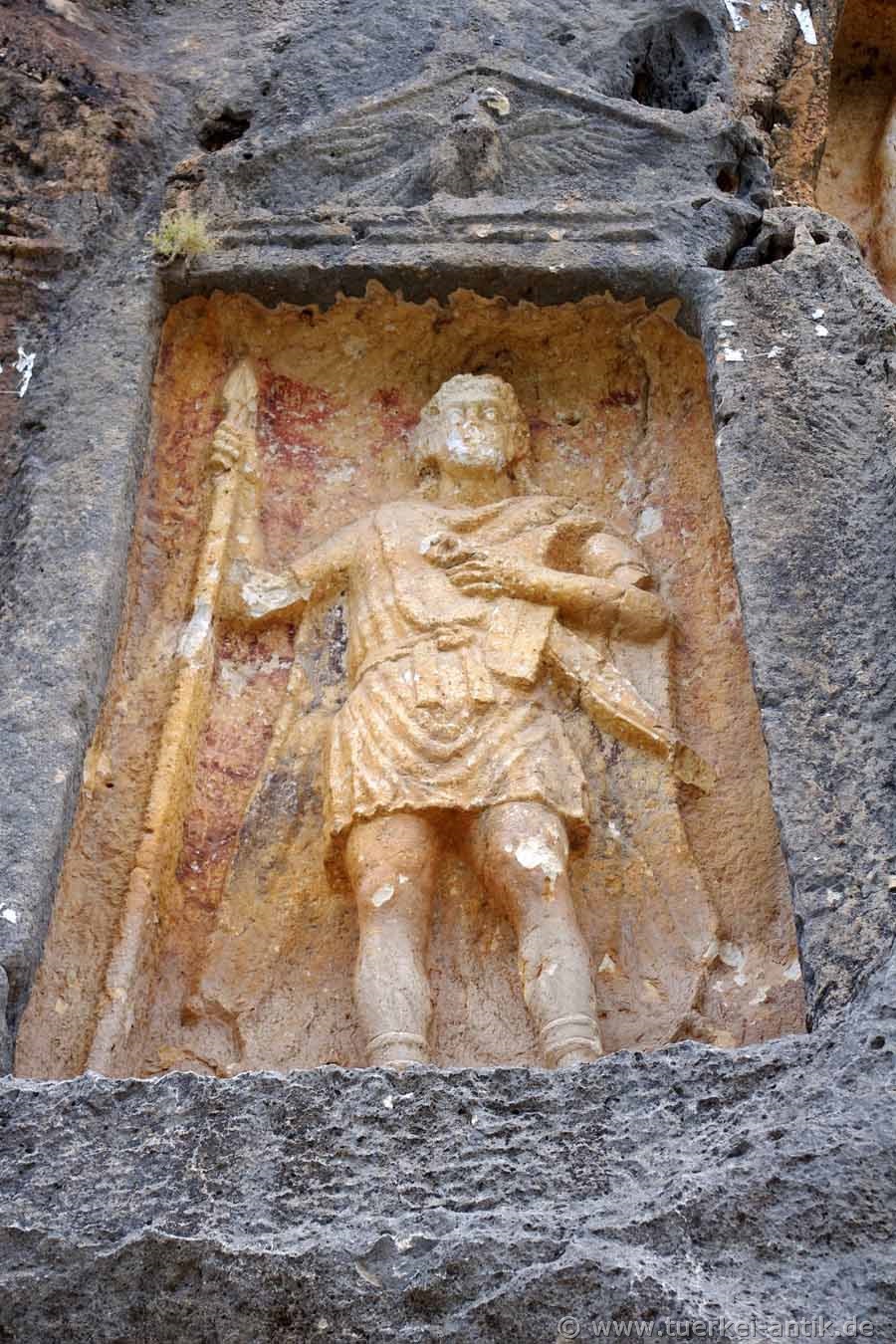 |
| Adamkayalar in Cilicia | |||
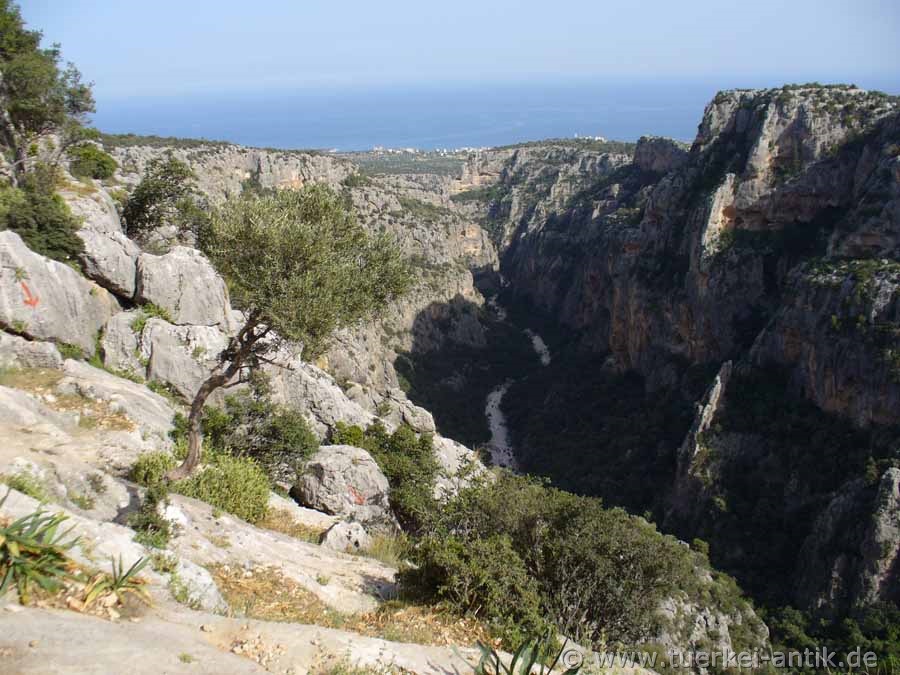 |
|
||
| The descent to the tomb reliefs | |||
|
The Adamkayalar (Turkish for human rock) are Roman tomb reliefs. They are located near the ancient Korykos near Kızkalesi in the southern Turkish province of Mersin. About eight kilometres north of Kızkalesi in the steep, almost vertical walls of Şeytan Deresi (Devil's Valley) lie several Roman family graves with thirteen associated reliefs in an inaccessible place. They are dated into the second to the first century B.C. today. |
|||
|
|
|||
|
The depictions show the deceased with their families, for example at a feast. A male figure lies on a kline, another has grapes in his hand. Other persons are armed with lance or battle axe. Among the depicted are also women with long robes and headscarves. Below two of the reliefs are inscriptions. The style of the works of art makes a somewhat unguided impression, it is similar in the nearby necropolises of Kanytelleis and Olba. No archaeological investigations have yet been carried out. |
|||
|
|
|||
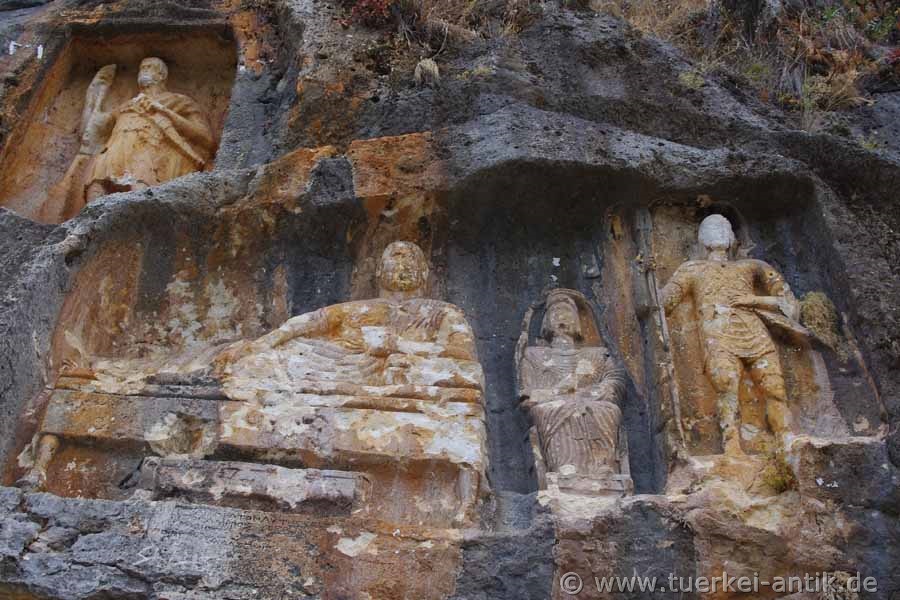 |
|||
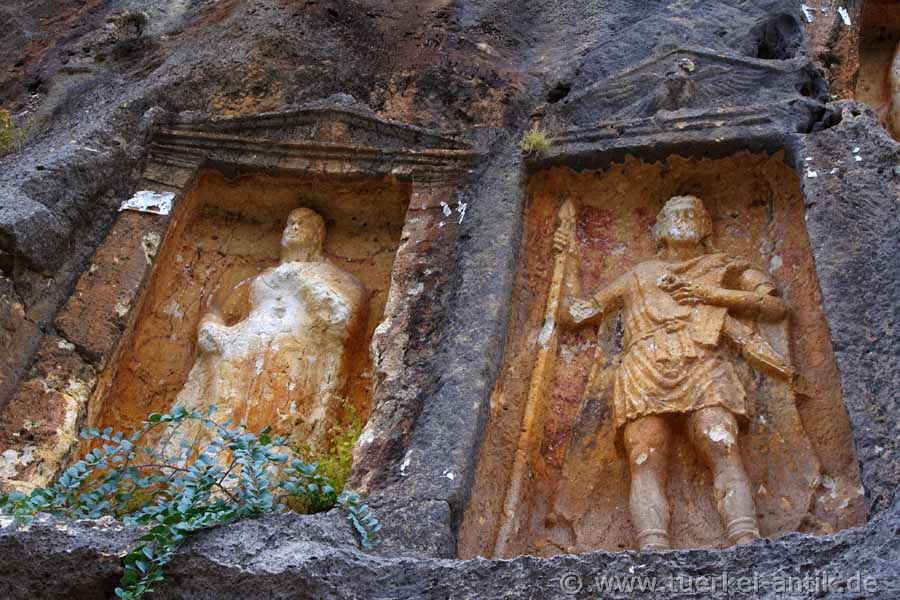 |
|||
|
|
|||
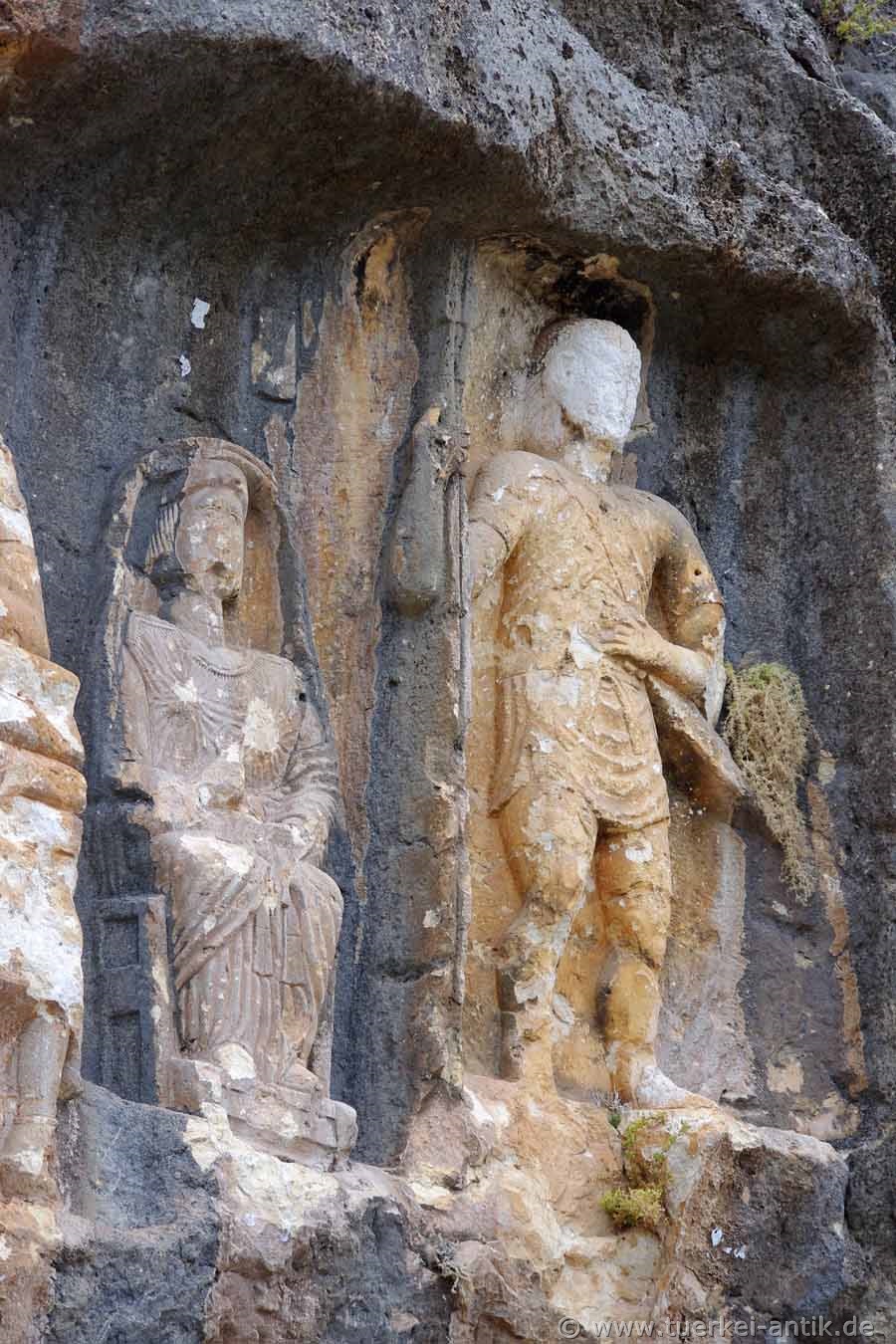
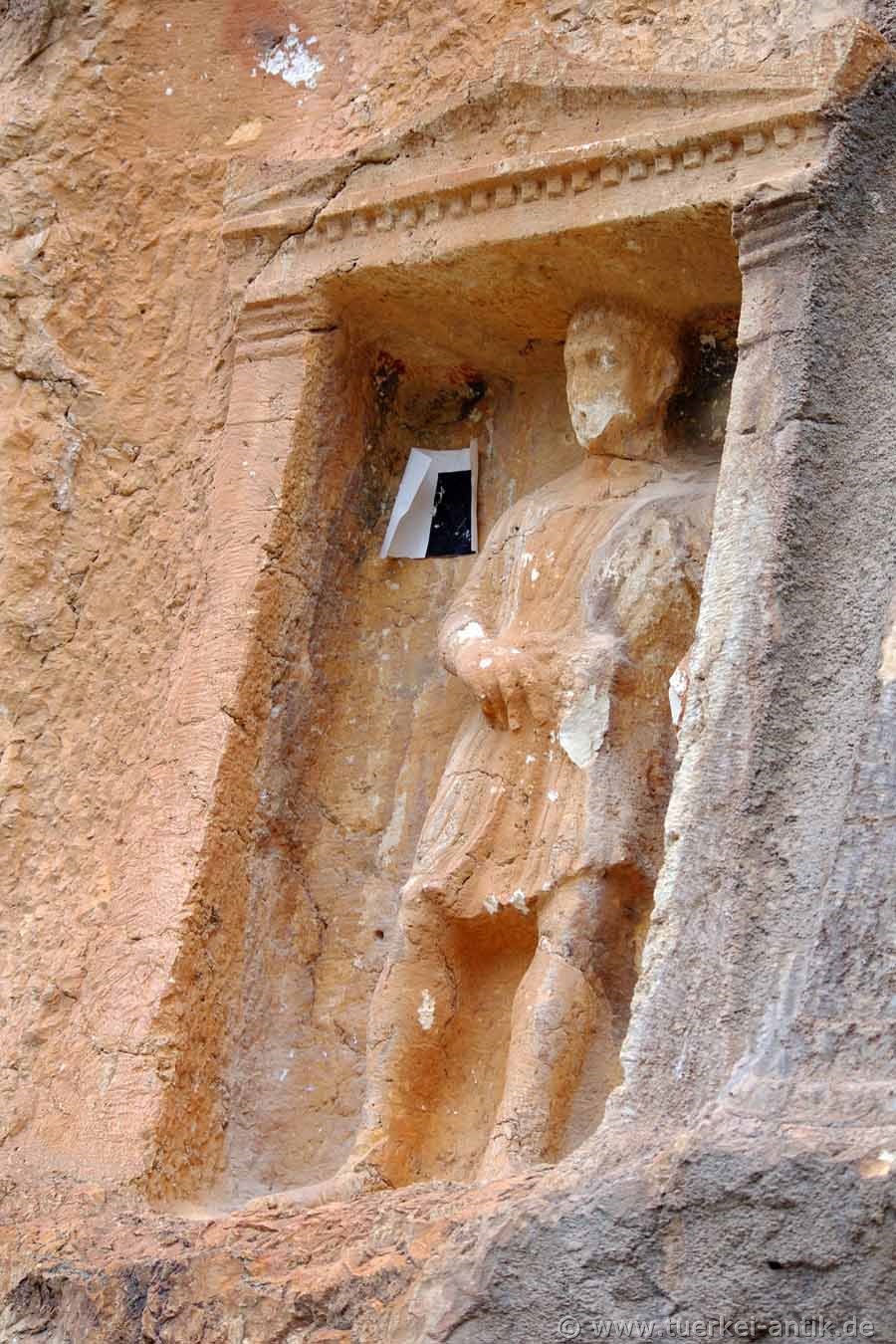 |
|||
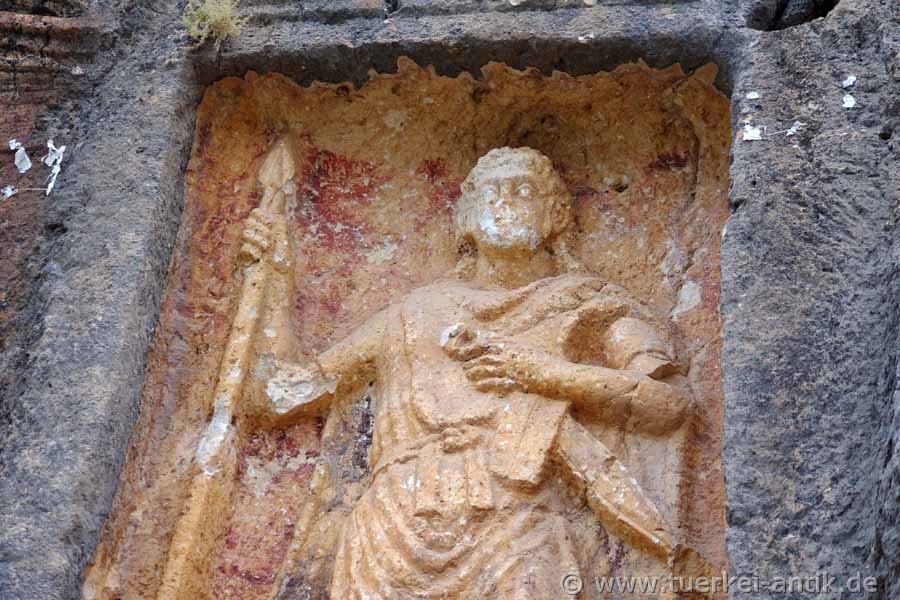 |
|||
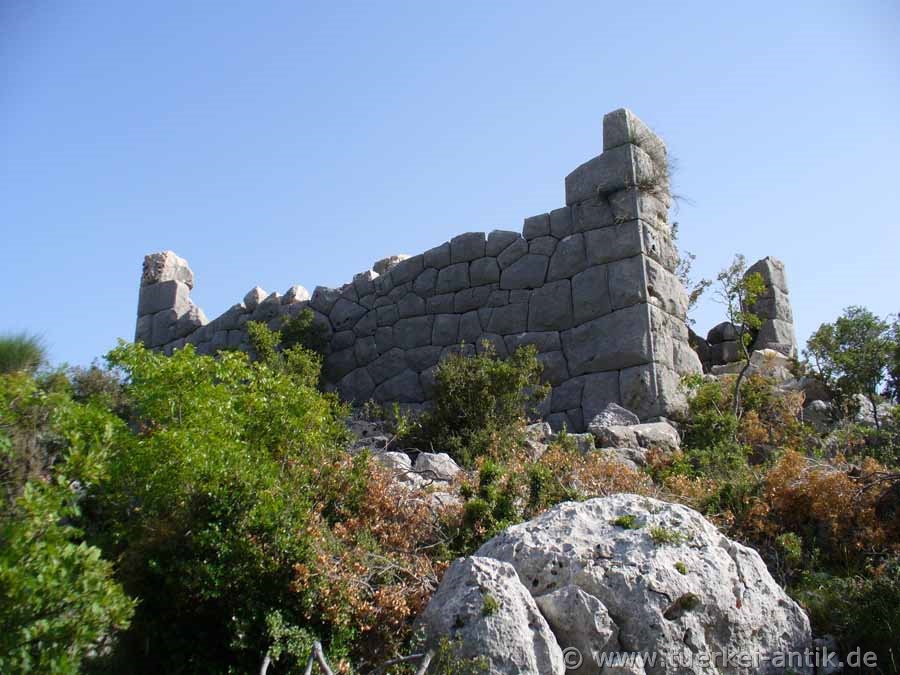 |
|||
| Ancient ruins above the Devil's Gorge | |||
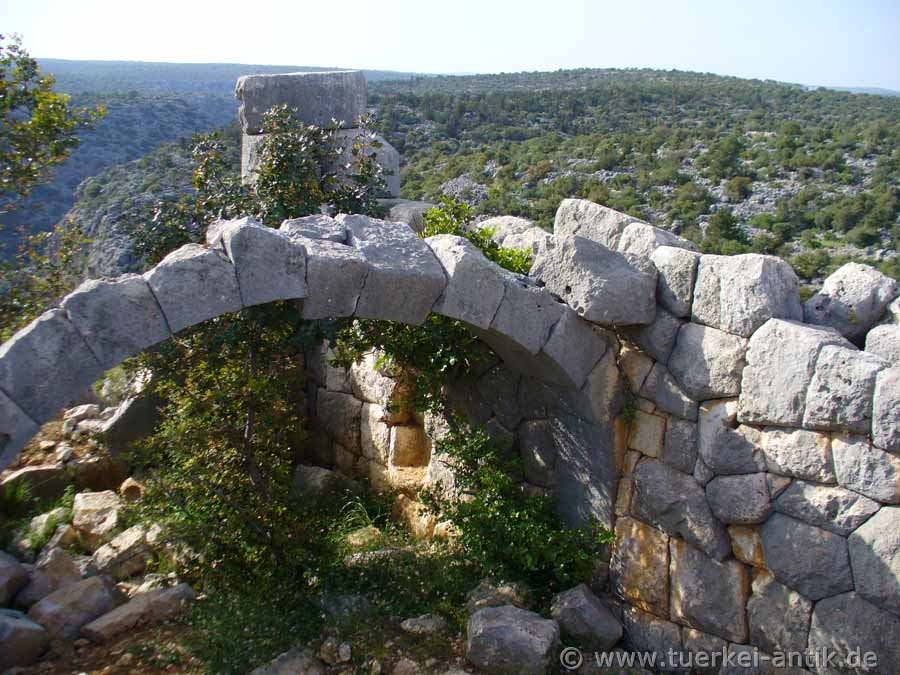 |
|||
| Ancient ruins above the Devil's Gorge | |||
|
At the upper edge of the gorge there are ruins of unknown origin on a hill. Due to the partially clearly visible Cyclopean masonry, at least parts of the complex are likely to date from Hellenistic, if not Hittite times. Cyclopean walls were also built by the Etruscans and other pre-Roman peoples in Italy and in the Hittite area until the 3rd century BC. A sighting of the whole plant is almost impossible due to the dense thorny growth. The location of the complex at the highest point at the edge of the valley, with a view of the girls' island of Korykos (today Kizkalesi) suggests that it was a fortified observation post, e.g. for protection against pirates. Presumably the place was still used at least partly in Byzantine times. |
|||
| Photos: @chim, Андрей Мурашкин | |||
| Translation aid: www.DeepL.com/Translator | |||
| Source: Wikipedia and others | |||
|
|
|||

